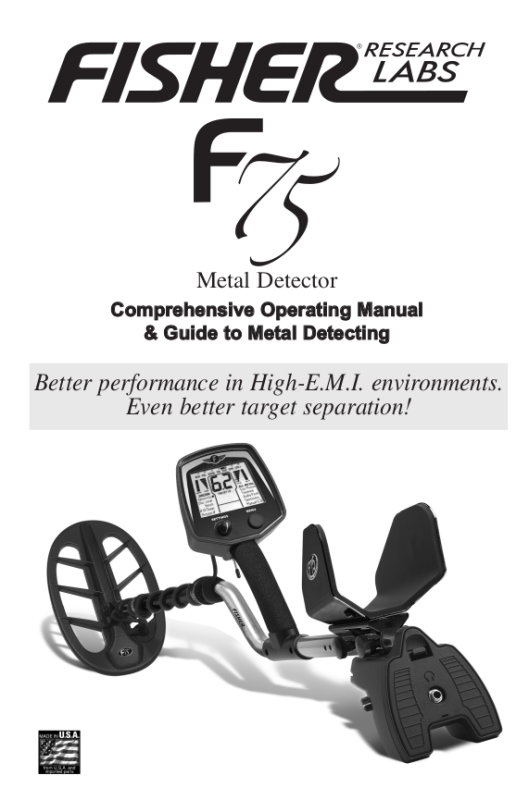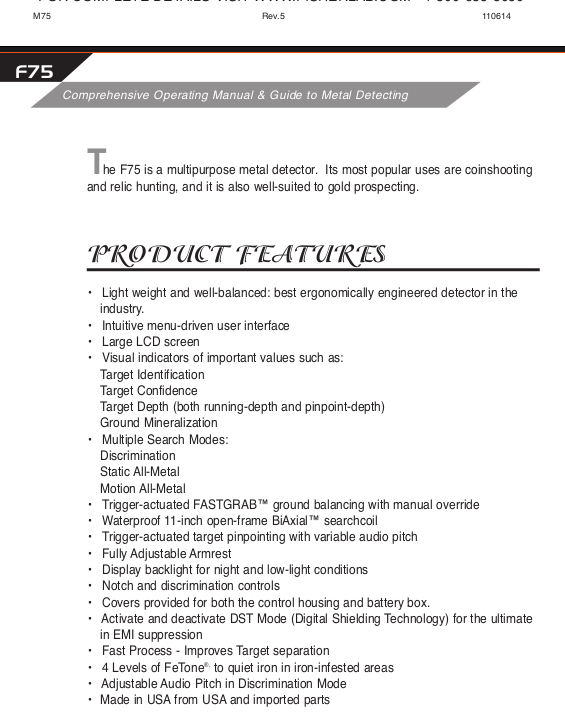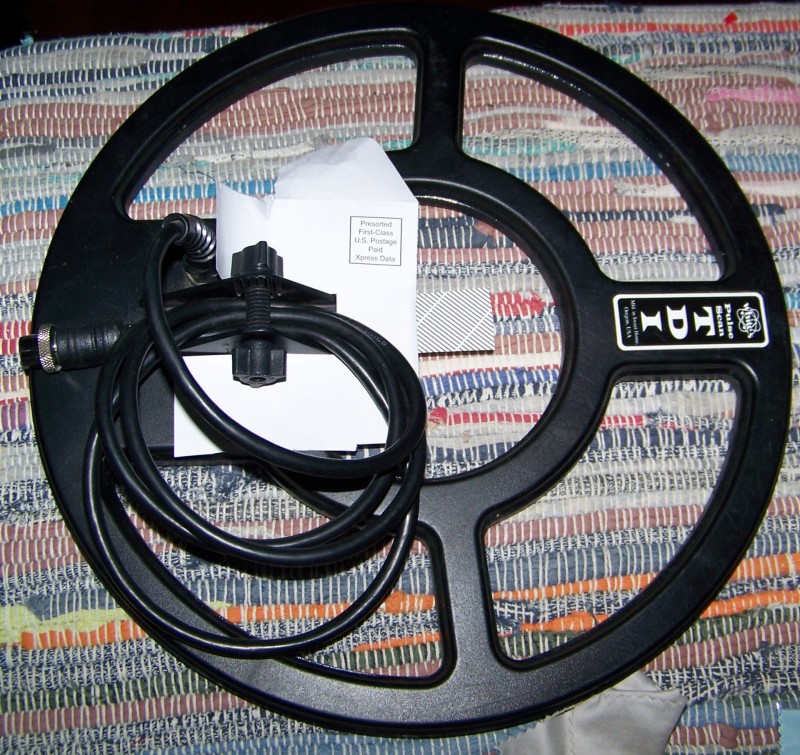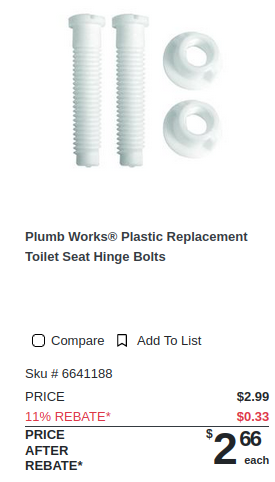-
Posts
5,778 -
Joined
-
Last visited
-
Days Won
12
Content Type
Forums
Detector Prospector Home
Detector Database
Downloads
Everything posted by GB_Amateur
-

Old Vs New Tech F75 Vs Legend
GB_Amateur replied to Pombo2000's topic in Metal Detector Advice & Comparisons
You've gotten quite a bit of good advice answering your specific questions. But since this forum is more than simply about specific questions or those who ask them, I'm going to throw a curve ball. Most of us have limited time to detect -- i.e. we wish we had more. Learning how to set up and use detectors is a necessary part of the endeavor. But adding a new detector and its learning process takes time away from learning about the one already in possession. In your specific case you seem to be a bit frustrated (at times, anyway) with the complexity of the Deus 2. I don't have one of those so can't comment specifically, but in my experience with other detectors, the better I get to know a detector the less complex it becomes. -
I occasionally get asked to find property line markers that for whatever reason have been lost/buried. I've had mixed success accomplishing this. Around where I live they are posts (usually steel but I don't think that is always the case) driven vertically into the ground. I've also found some by accident while detecting for coins. I'm headed out Saturday for another assignment. Any advice is welcome.
-

Minelab Manticore For The Desert
GB_Amateur replied to AKDREDGER's topic in Detector Prospector Forum
Here's another of Andrew's excellent videos (from April 2024) showing the Manticore+M8 finding desert gold: -
It seems like the $1200 USA price for the Minelab Manticore was aimed at that the XP Deus 2 market. Now it looks like the M'Core is still lagging behind by quite a bit! Minelab may be feeling the heat from investors for their lagging sales. Competition (above mentioned Deus 2 but also possibly Garrett's upcoming entry) is threatening part of 'the monopoly'.
-
That's the old way and some areas probably still have that. The new way is like yours -- optical fiber carries the signal all the way into the building (home, office, etc.). The fiber cable between (neighborhood) junction box to private residence does have a fine wire, the purpose of which is to attach a transmitter so the fiber line can be traced by a detector. But this is only activated for the purpose of utility line location determination -- e.g. when digging/excavation is going to occur and no one wants to cut the line. In my yard, the fiber line is quite shallowly located -- less than about 6 inches (15 cm) deep! I tried to pick up the line with a detector when it wasn't hooked to a transmitter and it did seem I could sense it, not by EMI but just from the presence of the fine wire. Might have been fooling myself, though....
-

ID Help - Aluminum Disc
GB_Amateur replied to DigDeepNow's topic in Metal Detecting For Coins & Relics
I doubt the VDI would be slightly lower than a dime if they are more/less dime size and made of aluminum. -
More great finds! The 1900-O dime is not common, particularly in higher grades (F-12 and above). I hesitate to give my opinion of the grade as photos typically don't show enough detail, but you can try your hand here.
-

A Good Week At The Tubing Hill And A School
GB_Amateur replied to Wasatchgold's topic in Metal Detecting For Jewelry
Unhunted sites are pretty difficult to find. Thanks for the report and well done! -
Finding even one silver half dollar is a great day, IMO, let alone two! I find your depth measurements interesting/enlightening. It makes me wonder what my 'hunted out' areas are hiding deep down.... I suspect you are getting in every free moment to detect that location before the inevitable 'development'. Milk it for all it's worth!
-

Detectors / Coils Question
GB_Amateur replied to D&P-OR's topic in Metal Detector Advice & Comparisons
That's what mine shows (installed with the latest software update), except for the last line (UVC) which is in the 8000's. I wonder what 'UVC' means. 🤔 -
Those actually work underwater, i.e. keeping water from entering the ear canal?
-
I do:
-

F75 V. T2 All Metal Modes
GB_Amateur replied to abcoin's topic in First Texas - Bounty Hunter, Fisher & Teknetics
Yep, and there are the various later models (F70, F75+, Teknetics Patriot) which included some but not all of their so-called 'processes'. Pretty much the same detector, just varied features (and prices). -

F75 V. T2 All Metal Modes
GB_Amateur replied to abcoin's topic in First Texas - Bounty Hunter, Fisher & Teknetics
Just a small addition: I think all the F75 models have static all metal. I do find their nomenclature confusing: 'Limited', 'Ltd', 'Special Edition', 'SE', etc. Here's the manual for the regular (gold shaft) model after Digital Shielding Technology (DST) was added, but in addition I have a pre-DST manual for the gold model and it also shows static all metal: -
You just named three items I've yet to find, too. In fact I haven't gotten any thimbles, regardless of the material makeup, and my only halves are clad. You must have a good spot there, and unless it's on the beach or a location soon to be developed, it'll still be there waiting for you after the storm passes. Maybe some more firsts still there!
-
The Fisher Gold Bug Pro (twin sister of the F19) has a special place in my memory (and detector closet) since it re-introduced me to detecting in 2015 after ~35 year hiatus. Last weekend my neighbor saw me coming back from a 'hunt' and asked me to find his property line stake. He showed me its approximate location which was close to both a metal light pole and metal utility box cover. Out comes the Fisher F75 with tiny 4"x6" concentric coil -- the right tool for the job. I quickly located two screamer hits, one being the desired target. First Texas gets a lot of negative criticism here, some of it justified and other just sharks in a feeding frenzy after seeing blood in the water. As others (e.g. El Nino77 recently) have noted, we can be thankful for some great products they've produced over the years that are still getting the job done. Your F19 is certainly one of those.
-
Excellent story to accompany your nice finds. Coincidentally I've visited your grandfather's hometown 2 or 3 times for meetings and tests at the Columbia Scientific Balloon Facility. I recall it can get quite uncomfortable (as in hot+humid) in the summer months. I see why you want to get out now before that starts!
-
I think the 'John' who was part of this interview is John Gardiner, another First Texas Engineer. Unfortunately Steve H. mentioned in another thread that First Texas's new website no longer includes several informative articles, etc. I'm pretty sure this was from one of those although you didn't indicate where you found it.
-
Local libraries are good repositories of historical info and librarians tend to be very helpful. And don't be surprised to find there were old newspapers even in small towns -- much bigger deal than today. Sometimes small towns had more than one! Libraries will have those on microfiche or maybe even on CD/DVD.
-
Not quite sure what you are asking, but here are some info (in some cases with numbers) that may help. 1) According to the scientific work that the article was based upon, they're referring to something that happened *very* early in the earth's history. To put this in relative terms, compare the earth's age with a human who lives 90 years. Right now the earth is middle aged -- equivalently about 45 years old. This meteorite bombardment occurred when the earth was (equiv.) 0.2 years (a few months) old. Needless to say the place was a lot different then! (The work referred to was done with 3.8 billion year old rocks from Greenland -- some of the oldest rocks on earth. The human equivalent age of the earth for those -- 7 years old.) 2) The mass of those meteorites is estimated at 2x10^19 (think 2 followed by 19 zeros) tons or 2x10^22 kg. The mass of today's earth is 6x10^24 kg, so this meteorite bombardment is about 1 part in 300 of the earth's current mass. (BTW, you can think of mass as weight -- true at the earth's surface anyway.) 3) Meteorite compositions have a ballpark (there's a range but this number is good for getting our heads around it) mass ratio for Fe to Au of 1 million (1x10^6). For the average earth's surface (crust) composition is about four times that high, so meteorites on average are a bit more concentrated in gold than other rocks/dirt/etc, but not ridiculously so. People have speculated regarding mining asteroids. IMO those stories tend to be exaggerated. But here is a decent article on the subject. Basically, though, they're still talking about ppm of precious metals, it's just that some asteroids are (relative to earth's mines) large and you can pick the ones that are primarily metals. I.e. you don't need to clear overburden and get rid of all the worthless silicon, oxygen etc. -- the early solar system already did that for you. The earth was formed from the solar nebula. So were the sun, the other planets, natural satellites (aka 'moons') the asteroids, and comets. The nascent sun had enough mass to collect the dominant elements: hydrogen in particular, plus helium) while the planets' lower masses let those go and mostly kept the heavy stuff. So no magic here, at least no more than has been known for quite a while. Precious metals are rare and even when concentrated (e.g. nuggets) that's still the case.
-
AFAIC all we have are rumors at this point. A short response to a social media question -- is that the way of the world now? Detecting season in the Northern Hemisphere is fast approaching. Similar to houses on the market, for the general detecting population (not necessarily the zealots here 😏), there's a sweet-zone in the calendar for people gearing up for summer recreation and we're pretty much on it with Spring popping up now. (But there's always Christmas. 🤔) Other marketing 'examples' of new detector announcements might have influenced Garrett. Do they go the XP and Algoforce route, keeping quiet until they have models ready for sale, or Minelab and Nokta with teaser ads, etc. a few to several months before release? They did the latter for the AT/Max, and I think for the Apex. Wasn't the Axiom announcement fairly close to production?
-

Axiom Coil Bolt Update - Now Available Online
GB_Amateur replied to CarsonChris's topic in Garrett Metal Detectors
Here's another possible option which works in the field if you can just get to a hardware store: Top photo shows the factory White's bolt and nut. Bottom is a toilet seat bolt and nut -- 3/8-16 plastic (nylon) size. Note: some toilet seats use a larger 7/16 diameter bolt. (I don't know what the standard is in the rest of the world, but wouldn't be surprised if a similar solution exists with metric sizes.) You can see in the second photo that the White's coil bracket hole is just slightly undersized such that the non-threaded shank of the toilet seat bolt won't quite fit. You could file or sand down the bolt pretty easily, and at least for the White's coils the 2 1/2 inch length leaves plenty of room to add the nut even if you don't go that extra step. As to whether this works for the Axiom, IDK, but you could take the coil to the hardware store to find out. Cost is ballpark $1.00 to $1.50 if I remember correctly. They should have 3/8 plastic washers, too. Here's an example of a pair from Menards (midwest big box lumber/hardware store similar to Lowes and Home Depot):







